Aluminum alloy overview
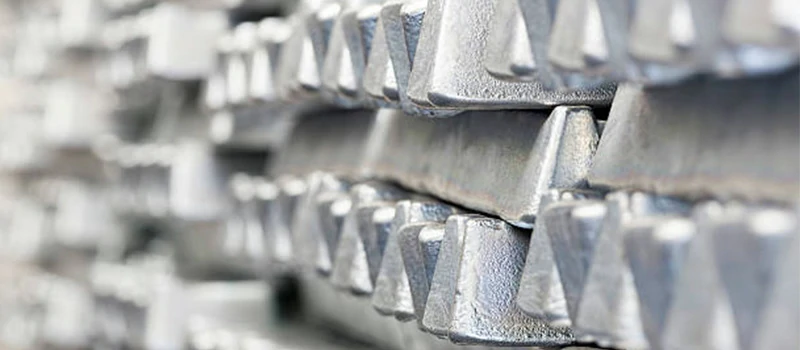
Pure aluminum has attracted much attention since humans discovered metals. With the advancement of technology, aluminum alloys have rapidly emerged to meet the needs of lightweight, energy saving and emission reduction, and have brought great progress to all walks of life.
In this article, we will discuss all aspects of aluminum alloys, including overview, grades, basic temper, detailed explanations of various aluminum alloys, common product forms, processing, heat treatment, etc., to provide a useful reference for your selection of aluminum alloys.
Aluminum alloy grade
| Category | Brand series |
| High purity aluminum (aluminum content not less than 99.8%) | Divided into smelted products and pressure processed products |
| Pure aluminum (aluminum content not less than 99.00%) | 1××× |
| Aluminum alloy with copper as the main alloy element [ Al-Cu] | 2××× |
| Aluminum alloy with manganese as the main alloying element [ Al-Mn] | 3××× |
| Aluminum alloy with silicon as the main alloying element [ Al-Si] | 4××× |
| Aluminum alloy with magnesium as the main alloy element [ Al-Mg] | 5××× |
| with magnesium and silicon as the main alloying elements and the Mg2Si phase as the strengthening phase [Al-Mg2Si] | 6××× |
| Aluminum alloy with zinc as the main alloy element [ Al-] | 7××× |
| Aluminum alloys with other alloying elements as the main alloying elements | 8××× |
| Spare alloy set | 9××× |
Aluminum alloy basic temper
| Temper | Description |
| F Free processing temper | It is suitable for products with special requirements for work hardening and heat treatment conditions during the molding process. The mechanical properties of the products in this temper are not specified. |
| O Annealing temper | Suitable for processed products that have been fully annealed to obtain minimum strength |
| H Work hardened temper | It is suitable for products whose strength is increased through work hardening. After work hardening, the product may or may not undergo additional heat treatment that reduces the strength (generally non-heat treatment strengthened materials) . The temper code behind common non-heat-treated strengthened aluminum alloys is usually the letter H plus two digits. |
| W Solid solution heat treatment temper | An unstable temper that is only applicable to alloys that have been naturally aged at room temperature after solid solution heat treatment. This temper code only indicates that the product is in the natural aging stage. |
| T Heat treatment temper | It is suitable for products that have been stabilized by work hardening (or not) after heat treatment. The T code must be followed by one or more Arabic numerals |
H
The letter H is usually followed by two digits: the first digit represents the work hardening method. The first digit after H is: 1, 2, 3, 4.
H1* H1* represents simple work hardening treatment.
H2* H2* indicates work hardening and incomplete annealing.
H3* H3* indicates work hardening and stabilization treatment.
H4* H4* indicates work hardening and painting treatment.
The second digit indicates the degree of hardening the material has achieved.
The second digit after H is: 1, 2, 3, 4, 5, 6, 7, 8, 9.
H*1 indicates hardness between 0 and 2.
H*2 indicates 1/4 hard.
H*3 indicates hardness between 2 and 4
H*4 indicates 1/2 hard
H*5 indicates hardness between 4 and 6
H*6 indicates 3/4 hard
H*7 indicates hardness between 6 and 8
H*8 indicates full hard temper
H*9 indicates super hard temper
(There are not many cases where H is followed by three numbers, only a few. H111 means that an appropriate amount of work hardening has been carried out after final annealing. H112 means products suitable for hot working and forming. H116 means 5000 aluminum alloy with magnesium content ≥ 4.0%.)
T
The temper code following the commonly seen heat-treatable aluminum alloys is usually the letter "T" followed by one or more Arabic numerals, which indicate the specific subdivision temper of T.
Add Arabic numerals from 0 to 10 after T to indicate the subdivision temper (called TX temper). The number after T indicates the heat treatment procedure for the product.
Adding one Arabic numeral (called TXX temper) or two Arabic numerals (called TXXX temper) after the TX temper code indicates that the product characteristics (such as mechanical properties, corrosion resistance, etc.) have been significantly changed. The temper of the process.
T0 is solid solution heat treatment, through natural aging and then cold working. It is uitable for products whose strength has been increased by cold processing.
T1 is cooled by the high-temperature molding process and then naturally aged to a basically stable temper. It is suitable for products that will no longer undergo cold processing after being cooled by the high-temperature forming process (straightening and leveling can be performed, but the mechanical performance limit will not be affected).
T2 is cooled by the high-temperature forming process and naturally aged to a basically stable temper after cold working. It is suitable for products that are cooled by high-temperature molding processes and then cold processed, or straightened and leveled to improve strength.
T3 temper achieved after solution heat treatment followed by cold working, and then naturally aged to a basically stable condition. This is suitable for products that undergo cold working, straightening, or leveling after solution heat treatment to increase their strength.
T4 temper achieved after solution heat treatment and natural aging to a basically stable condition. This is suitable for products that do not undergo cold working after solution heat treatment (straightening or leveling is allowed, but it does not affect the mechanical property limits).
T5 is a temper in which it is cooled by a high-temperature molding process and then artificially aged. It is suitable for products that are artificially aged after being cooled by the high-temperature molding process without cold processing (straightening and leveling can be carried out, but the mechanical performance limit will not be affected).
T6 is a temper of artificial aging after solution heat treatment. It is suitable for products that will no longer undergo cold processing after solid solution heat treatment (straightening and leveling can be performed, but the mechanical performance limit will not be affected).
T61 is a special heat treatment temper that requires its strength to be lower than T6.
T62 is applicable to products that have entered artificial aging after solid solution heat treatment in the O or F temper. It is also applicable to products whose mechanical properties have reached the T62 temper after the buyer heat-treats processed products in any temper.
T7 is a temper of artificial aging after solution heat treatment. It is suitable for products whose strength has crossed the highest peak on the aging curve during artificial aging in order to obtain certain important properties after solution heat treatment.
T8 is a temper after solution heat treatment, cold working, and then artificial aging. It is suitable for products that have been cold processed, or straightened and leveled to improve product strength.
T9 is the temper of artificial aging after solution heat treatment and then cold working. It is suitable for products that have been cold processed to increase product strength.
T10 is in a temper where it is cooled by the high-temperature molding process, cold worked, and then artificially aged. It is suitable for products that have been cold processed, or straightened and leveled to improve product strength.
T42 is applicable to products that have reached a fully stable state with natural aging after solid solution heat treatment in the O or F temper. It is also applicable to products whose mechanical properties have reached the T42 temper after the buyer heat-treats processed products in any temper.
T73 is suitable for products that have been aged after solid solution heat treatment to achieve the specified mechanical properties and stress corrosion resistance performance indicators.
The T74 and T73 temper definitions are the same. The tensile strength of this temper is greater than that of the T73 temper, but less than that of the T76 temper.
The T76 and T73 temper definitions are the same. The tensile strength of this temper is higher than that of the T73 and T74 tempers respectively, and the stress corrosion cracking resistance is lower than that of the T73 and T74 states respectively, but its spalling corrosion resistance is still good.
T7X2 is suitable for products that have undergone artificial aging treatment after solid solution heat treatment in the O or F temper, and the mechanical properties and corrosion resistance have reached the T7X temper.
T81 is suitable for products that undergo solid solution heat treatment, undergo about 1% cold working deformation to increase strength, and then undergo artificial aging.
T87 is suitable for products that undergo solid solution heat treatment, undergo about 7% cold working deformation to increase strength, and then undergo artificial aging. relieve stress temper.
Adding "51", or "510", or "511", "52" or "54" after the above TX or TXX or TXXX temper code indicates the product temper code that has undergone stress relief treatment.
TX51 TXX51 TXXX51 is suitable for thick plates, rolled or cold-finished bars and die forgings, forged rings or rolled rings that are stretched to a specified amount after solution heat treatment or cooling from the high-temperature forming process. These products are stretched. No further straightening is performed afterwards. The permanent deformation of thick plates is 1.5%~3%; the permanent deformation of rolled or cold-finished bars is 1%~3%; the permanent deformation of die forgings, forged rings or rolled rings is 1%~5%. The permanent deformation of extruded rods, shapes and pipes is 1%~3%; the permanent deformation of drawn pipes is 1.5%~3%.
TX511, TXX511, and TXXX511 are applicable to extruded bars, shapes, and tubes, as well as drawn tubes, that are stretched by a specified amount after solution heat treatment or cooling from a high-temperature forming process. These products can be slightly straightened after stretching to meet standard tolerances.
TX52 TXX52 TXXX52 is suitable for solution heat treatment or cooling from the high-temperature molding process, and then compressing to eliminate stress to produce products with a permanent deformation of 1% to 5%.
TX54 TXX54 TXXX54 is suitable for die forgings that are stress relieved by cold shaping in the final forging die.
Detailed explanation of various series of aluminum alloys
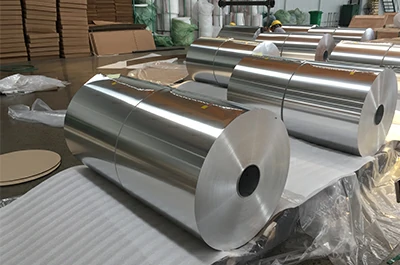 1000 series: pure aluminum (aluminum content is not less than 99.00%).
1000 series: pure aluminum (aluminum content is not less than 99.00%).- Alloy: 1050 1060 1070 1100 1200 1350
- Temper: O, H12, H14, H16, H18, H22, H24, H26, F…
- Features: It has the characteristics of low density, good electrical conductivity, high thermal conductivity, large latent heat of solution, large light reflection coefficient, small thermal neutron absorption cross-section and beautiful external surface color, and has good corrosion resistance.
1050 aluminum is widely used in the food, chemical, and brewing industries. It is generally used for making extruded coils, various hoses, and similar products.
1060 aluminum is suitable for applications where high corrosion resistance and formability are required, but high strength is not. It has strong electrical conductivity, with an IACS rating of 61%.
1070 aluminum has high purity and is often used in the electrolytic aluminum industry and electronic fields.
1080 aluminum has good electrical conductivity and is often used in power transmission lines and power equipment.
1100 aluminum is a general-purpose aluminum material with a purity of 99.0% or above. It has a slightly white appearance after anodization.
1200 aluminum has excellent formability and is commonly used in applications such as pressure vessels and heat exchangers.
1145 aluminum is widely used in packaging and insulating aluminum foil, heat exchangers, etc.
1199 aluminum is primarily used for making electrolytic capacitor foil.
1350 aluminum is widely used in wires, conductive stranded wires, bus bars, transformer strips, etc.
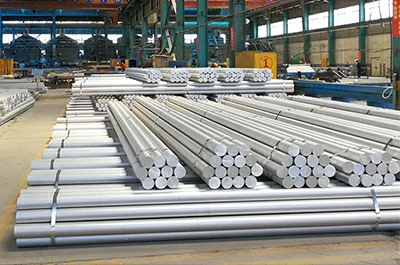 2000 series: aluminum alloy with copper as the main alloy element.
2000 series: aluminum alloy with copper as the main alloy element.- Alloy: 2014 2024 2017
- Temper: O, T4, T6, T451, T42, T8, T851, T62, F, H112…
- Features: high-strength duralumin alloy offers good heat resistance and processing but lacks corrosion resistance. Copper-based alloy plates may need a coating of pure aluminum or 6-series alloy for improved corrosion resistance.
2011 has high strength and is easy to cut, mostly used for screws and machining products requiring good cutting performance.
2014 aluminum is suitable for situations requiring high strength and hardness, such as heavy aircraft, forgings, thick plates, etc., as well as scenes with high strength requirements such as truck frames and suspension system parts.
2017 aluminum, as the first 2000 series alloy to obtain industrial application, it is mainly used for structural parts such as rivets and general mechanical parts, as well as propellers and transportation vehicle structural parts.
2024 aluminum has excellent strength and corrosion resistance and is suitable for aircraft structures, missile components, truck wheels and other occasions requiring high strength, as well as various structural parts and propeller components and other aerospace fields.
2117 aluminum has good mechanical properties and corrosion resistance, and is suitable for aerospace structural parts.
2018 aluminum has good high temperature performance and mechanical properties and is used in aircraft and diesel engine pistons and cylinder heads, as well as jet engine impellers and compressor rings.
2124 aluminum has excellent strength and corrosion resistance and is mainly used for aerospace structural parts and is suitable for aerospace field requirements.
2218 aluminum has good high temperature performance and mechanical properties and is used in aircraft and diesel engine pistons and cylinder heads, as well as jet engine impellers and compressor rings.
2219 aluminum is suitable for working temperatures ranging from -270°C to 300°C. It has good weldability and high fracture toughness. In the T8 temper, it has excellent resistance to stress corrosion cracking. This alloy is commonly used for aerospace applications, such as welded oxidizer tanks for rockets and skin and structural components for supersonic aircraft.
2618 aluminum has excellent mechanical properties and heat resistance and is mainly used for die forgings and free forgings, as well as pistons and aerospace engine parts.
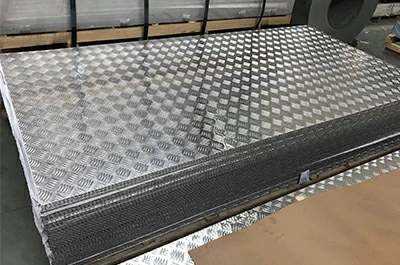 3000 series: aluminum alloy with manganese as the main alloying element
3000 series: aluminum alloy with manganese as the main alloying element- Alloy: 3003 3004 3105
- Temper: O, H111, H112, H12, H14, H16, H18, H22, H24, H26
- Features: it has high plasticity, good welding performance, higher strength than 1 series aluminum alloy, and similar corrosion resistance to 1 series aluminum alloy. It is a medium-strength aluminum alloy with good corrosion resistance, wide use and large dosage.
3003 aluminum has good formability, high corrosion resistance and weldability. 3003 seamless pipe is a very common product and is widely used in aircraft oil guide pipes.
3004 aluminum has higher strength than 3003 and is mainly used in applications requiring high strength such as all-aluminum can bodies, chemical product storage devices, construction parts and lighting parts.
3005 aluminum has good corrosion resistance and formability, and is suitable for manufacturing building materials such as room partitions, baffles, and downpipes, as well as container sealing parts such as bottle caps and stoppers.
3104 aluminum has good forming performance and strength and is suitable for the manufacture of thin plate forming parts such as room partitions, baffles, and mobile house panels, as well as container sealing parts such as bottle caps and stoppers.
3105 aluminum has good formability and corrosion resistance and is used in the manufacture of building materials such as room partitions, baffles, gutters and downpipes, as well as container closures such as bottle caps and stoppers.
3203 aluminum is suitable for the manufacture of thin plate forming parts, such as room partitions, baffles and other building materials.
3A21 aluminum is suitable for aircraft fuel tanks, oil conduits, rivets, wires, building materials, food and other industrial equipment, etc.
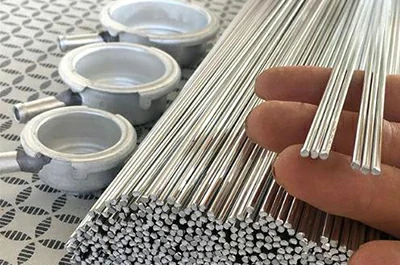 4000 series: aluminum alloy with silicon as the main alloy element
4000 series: aluminum alloy with silicon as the main alloy element- Alloy: 4045 4047 4343 4545
- Temper: O, H12, H14, H16, H18
- Features: low melting point, good solution fluidity, easy to shrink, and will not make the final product brittle. It is mainly used to make additive materials for aluminum alloy welding, such as: brazing plates, welding rods, welding wires, etc.
4043 aluminum has good fluidity and crack resistance and is suitable for welding various metals, especially the connection between aluminum alloys and other metals. Commonly used in welding processes in aerospace, automotive, shipbuilding and construction fields.
4047 aluminum has good welding performance and high corrosion resistance. It is often used in the welding of heat exchangers of automobile engines, automobile radiators, air conditioners and other cooling systems to ensure the stability and reliability of welded parts.
4032 aluminum has excellent wear resistance and high temperature strength. It is suitable for manufacturing pistons, cylinder liners and other engine parts of high-performance automobile engines, and can withstand harsh working conditions under high temperature and pressure.
4145 aluminum has excellent welding performance, high strength and corrosion resistance, and is often used to manufacture welding materials in the fields of automobiles, aerospace and engineering machinery to ensure that the welded parts have good structural strength and service life.
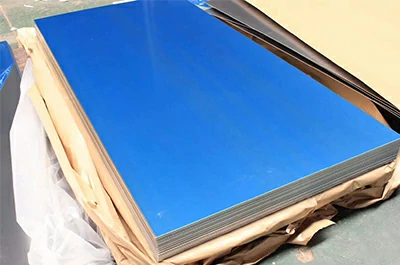 5000 series: aluminum alloy with magnesium as the main alloy element
5000 series: aluminum alloy with magnesium as the main alloy element- Alloy: 5052 5454 5754 5082 5083 5086
- Temper: O, H111, H112, H116, H321, H12, H14, H24, H16, H18, H32, H34, H36
- Features: it has low density and higher strength than 1 series and 3 series aluminum alloys. It is a medium-high strength aluminum alloy with good fatigue performance and welding performance, and good resistance to marine atmospheric corrosion.
5005 aluminum has medium strength and good corrosion resistance. It is usually used as conductors, cookware, instrument panels, shells and architectural decorations.
5050 aluminum sheet can be used as the lining plate of refrigerators and refrigerators, and can also be processed into thick plates, pipes, bars, special-shaped materials and wires, etc.
5052 aluminum has good forming performance, corrosion resistance and seawater resistance. It is suitable for manufacturing sheet metal parts of aircraft fuel tanks, transportation vehicles, ships, as well as instruments, street lamp brackets, rivets and hardware products.
5056 aluminum has excellent corrosion resistance and is suitable for surface modification and anodizing during cutting. It is widely used for cable sheathing rivets, zippers, nails, etc.
5082 aluminum has medium strength and good corrosion resistance. It is suitable for applications in marine environments and mainly used in the manufacture of marine equipment, ship structures, pressure vessels and anti-corrosion equipment.
5083 aluminum has high corrosion resistance, good weldability and medium strength. It is mainly used in ship, automobile, aircraft plate welding parts, pressure vessels, oil tankers and other fields.
5086 aluminum is a non-heat treatment alloy used for welding structures with good seawater resistance. It is mainly used in applications requiring high corrosion resistance, good weldability and medium strength.
5154 aluminum is widely used in welded structures, storage tanks, pressure vessels, ship structures and offshore facilities, transport tanks.
5182 aluminum sheet is used to process can lids, automobile body panels, control panels, reinforcements, brackets and other parts.
5252 aluminum is used to manufacture decorative parts with higher strength, such as decorative parts for automobiles. After anodizing, it has a bright and transparent oxide film.
5254 aluminum is mainly used for hydrogen peroxide and other chemical products containers.
5356 aluminum is used for welding rods and wires for aluminum-magnesium alloys containing more than 3% magnesium.
5454 aluminum has good welding performance and corrosion resistance, and is suitable for welded structures, pressure vessels, and marine facility pipelines.
5456 aluminum has high strength and is suitable for armor plates, high-strength welded structures, storage tanks, pressure vessels and ship materials.
5457 aluminum is used to manufacture decorative parts for automobiles and other equipment, and usually undergo polishing and anodizing surface treatment. It is necessary to ensure that the material has a fine grain structure.
5652 aluminum inhibits the separation of hydrogen peroxide and can be used as a storage container for hydrogen peroxide and other chemical products. Its performance is similar to 5052.
5657 aluminum is used to manufacture decorative parts for automobiles and other equipment, and usually undergo polishing and anodizing surface treatment. it is used to manufacture decorative parts for automobiles and other equipment. The material must have a fine grain structure.
5A02 aluminum is suitable for aircraft fuel tanks and conduits, welding wires, rivets and ship structural parts, and has good welding performance.
5A03 aluminum has medium strength, and is mainly used for welded structures, cold stamped parts, welding containers and welding wires, and can replace 5A02 alloy.
5A05 aluminum is usually used for welding structural parts and aircraft skin frames.
5A06 aluminum is usually used for welded structures, cold die forging parts, welded drawn vessel stress parts and aircraft skin parts.
5A12 aluminum is mainly used for welding structural members and bulletproof decking.
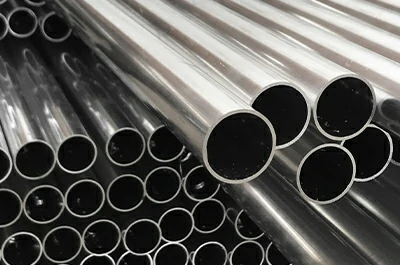 6000 series: aluminum alloy with silicon and magnesium as main alloy elements
6000 series: aluminum alloy with silicon and magnesium as main alloy elements- Alloy: 6061 6063 6082
- Temper: O, T4, T451, T42, T6, T651, T62, F, H112
- Features: medium strength, high corrosion resistance, no stress corrosion cracking tendency, good welding performance, unchanged corrosion performance in the welding zone, good formability and process performance, etc. The main product is extruded profiles, which are the best extruded alloys and are widely used for building profiles.
6061 aluminum alloy is suitable for various industrial structures with certain strength, weldability, and high corrosion resistance. It is used for manufacturing pipes, bars, profiles, and plates for trucks, tower buildings, ships, trams, fixtures, mechanical parts, precision machining, and other applications.
6063 aluminum is a type of architectural profile, commonly used as extruded material for stands, furniture, railings, etc. It can also be used for irrigation pipes and vehicle components.
6101 aluminum has good electrical conductivity. 6101 aluminum bar, tubes, busbar, and wire are mostly used in conductive fields, electrical conductors and heat dissipation equipment, etc.
6262 aluminum has excellent processing and mechanical properties and performs well at high temperatures. It is usually used in the manufacturing of parts in the automotive and aviation fields.
6082 aluminum has excellent mechanical properties, corrosion resistance and weldability, and is a versatile aluminum alloy. It is mainly used in manufacturing transportation equipment, building structures, ship components, pressure vessels, power equipment, etc.
6005 aluminum is mostly used to make extruded pipes and structural parts that require strength greater than 6063 alloy, such as ladders, TV antennas, etc.
6009 aluminum is a commonly used auto body panels.
6010 aluminum thin plates are mostly used in automobile bodies.
6066 aluminum is conmmonly used as welded structural extrusion materials.
6070 aluminum alloy is commonly used as extruded material for heavy-duty welding structures and in the automotive industry.
6151 aluminum is used for die forging crankshaft parts, machine parts and production of rolling rings, for applications that require both good forgeability, high strength and good corrosion resistance.
6201 aluminum is commonly used for high strength conductive rods and wires.
6205 aluminum alloy is primarily used for manufacturing thick plate products, such as pedal assemblies and extruded parts resistant to high impact.
6351 aluminum is commonly used as extruded structural parts of vehicles, pipelines for water, oil, etc.
6463 aluminum alloy is commonly used for architectural and various appliance profiles. After anodizing treatment, it has a bright surface and can be used for automotive decorative parts.
6A02 aluminum alloy is mainly used for manufacturing complex-shaped forgings and die forgings, and it is applied in aircraft engine components.
 7000 series: aluminum alloy with zinc as the main alloy element
7000 series: aluminum alloy with zinc as the main alloy element- Alloy: 7072 7075 7475 7005 7050
- Temper: O, T6, T651, T62, T652, T76, T7651, T73, T7351, H112
- Features: Known as high-strength aluminum alloy, it is easy to process, has good corrosion resistance and high toughness, and is widely used in the aerospace field.
7075 aluminum is used in the manufacture of aircraft structures and futures, high-stress structural parts and mold manufacturing that require high strength and strong corrosion resistance.
7050 aluminum alloy is mainly used for manufacturing medium-thick plate products, extrusions, and other components used in aircraft structures. The requirements for manufacturing these parts include high resistance to exfoliation corrosion, stress corrosion cracking, high fracture toughness, and fatigue resistance.
7175 aluminum is used for forging high-strength structures for aircraft. T736 material has good comprehensive properties, that is, high strength, resistance to spalling corrosion and stress corrosion cracking, fracture toughness, and fatigue strength.
7475 aluminum alloy is available in both clad and non-clad sheets. It is predominantly used for aircraft fuselages, wing ribs, and other components that require high strength and high fracture toughness.
7005 aluminum extruded material is usually used to manufacture welded structures that require both high strength and high fracture toughness, large heat exchangers, and parts that cannot be solid solution treated after welding; it can also be used to manufacture sports equipment.
7039 aluminum is mainly used for freezing containers, cryogenic equipment and storage boxes, fire-fighting pressure equipment, military equipment, armor plates, missile devices.
7049 aluminum is used for forging parts that have the same static strength as 7079-T6 alloy but require high resistance to stress corrosion cracking, such as aircraft and missile parts - landing gear hydraulic cylinders and extrusions.
7072 electrode has low potential and is mainly used for covering leather materials.
7178 aluminum is used to manufacture parts for aerospace vehicles that require high compressive yield strength.
7A04 aluminum is mainly for aircraft skin, screws, and stress-bearing components such as beam stringers, bulkheads, wing ribs, landing gear, etc.
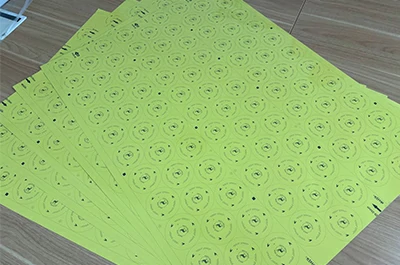 8000 series: aluminum alloys with other elements as main alloying elements
8000 series: aluminum alloys with other elements as main alloying elements- Alloy: 8011
- Temper: O, H14, H24
The most commonly used 8000 series aluminum alloy is 8011, which belongs to other series. Most of the applications are aluminum foil.
Heat treatment of aluminum alloy
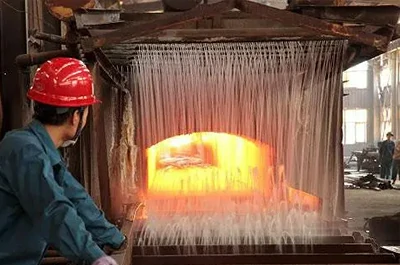 Solution treatment
Solution treatment- First, solid solution treatment is performed, and the aluminum alloy is heated to the solid solution temperature to dissolve the solute elements in the aluminum matrix.
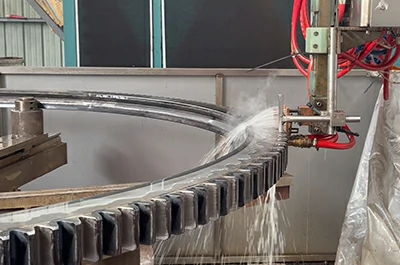 Quenching process
Quenching process- After solution treatment, quenching treatment is performed. Quenching is a form of heat treatment that fixes the state of aluminum alloy at high temperature to room temperature in a supercooled and supersaturated state. The solid solution heat state is the quenching state, which makes the material hard.
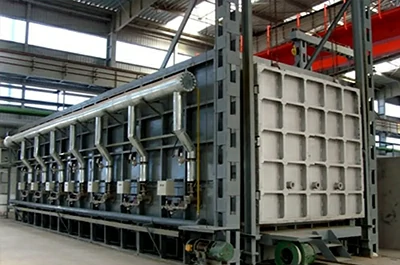 Aging treatment
Aging treatment- After completing quenching, aging treatment is performed, that is, keeping it at a certain temperature for a period of time to promote the precipitation of solute elements in the alloy and the formation of a stable strengthening phase, further improving the strength and hardness of the alloy.
 Annealing process
Annealing process- Annealing is a metal heat treatment process, which refers to slowly heating the metal to a certain temperature, maintaining it for a sufficient time, and then cooling it at an appropriate speed. The purpose is to reduce hardness, improve machinability, reduce residual stress, stabilize dimensions, and reduce deformation and cracks. Tendency, simply put, annealing is a heat treatment process for materials to make them softer

